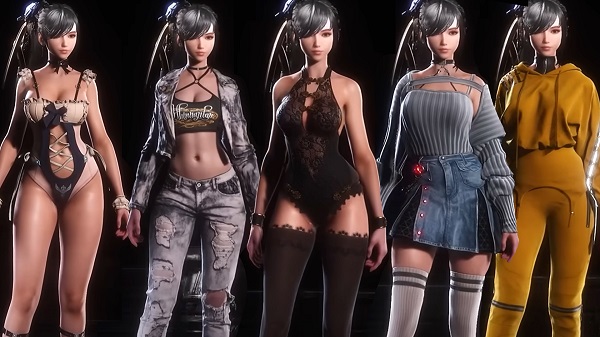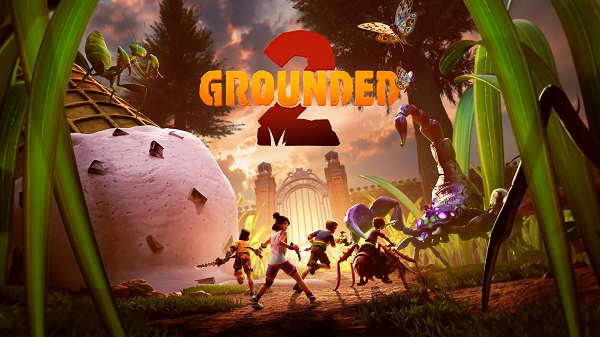Popular Now
Stellar Blade, the action-adventure game developed by South Korean studio Shift Up, is finally coming to PC on June 11, 2025, after its original PlayStation 5 release in April 2024. The PC version promises major enhancements like AI upscaling, support for Nvidia DLSS 4 and AMD FSR 3, unlocked frame rates beyond 120 FPS, and full ultrawide support (up to 32:9). Alongside the technical upgrades, players will receive new in-game content, including a new boss fight against Mann and 25 fresh costumes for the protagonist, Eve.
But beyond the technical polish and content additions, Stellar Blade is at the center of a larger, more heated conversation — the portrayal of its main character, Eve. This article explores that controversy in-depth, charting the development intentions, public reaction, cultural impact, and broader implications of how video games represent female protagonists today.
1. The Genesis of Eve: Design Intentions

Eve's appearance was meticulously crafted by the development team, led by Kim Hyung-tae, an artist known for his distinct, stylized character designs. The intent was clear: to make Eve visually striking, both for gameplay readability in third-person action and to stand out in a crowded market.
From her tight-fitting outfit to the animation style, every detail was designed to captivate. The team aimed to give Eve a presence that would be memorable and instantly recognizable. While this succeeded in gaining attention, it also triggered critiques from players and critics who felt the design leaned too far into fan service, raising questions about whether her character had depth beyond aesthetics.
2. Public Reception and Critique
Upon its console launch, Stellar Blade received mostly favorable reviews. Players appreciated its responsive combat, stunning visuals, and fast-paced mechanics. However, Eve’s design quickly became a divisive talking point.
Some praised the character for her distinctive appearance and combat elegance, arguing it was consistent with the game’s sci-fi anime inspiration. Others criticized the oversexualized outfit designs, accusing the game of prioritizing visual appeal over meaningful character development. These criticisms were particularly vocal across Western forums and social media, where expectations around representation have grown more nuanced.
3. Cultural Perspectives and Ratings

Cultural reactions to Eve's design varied widely. In South Korea, where the game originated, it received an Adults Only rating due to Eve’s suggestive outfits and several sexually provocative visual scenes. This rating, while not uncommon for mature-themed games, limited its accessibility in local markets.
Meanwhile, in the West, the character design was less likely to trigger ratings restrictions but sparked more intense social commentary. This difference illustrates how cultural norms influence both the perception and regulation of character portrayals in games. Developers had to walk a tightrope — designing a game that reflects their creative vision while ensuring it meets regional content standards.
4. Developer's Response to Controversy
Game director Kim Hyung-tae publicly addressed the backlash, clarifying that the design of Eve was aimed at an adult audience. He stated that Stellar Blade was created as an action game that embraces its stylish anime-influenced roots and isn't meant to conform to Western standards of "safe" design.
Kim emphasized that Eve's visual identity was as important as her role in the story and gameplay mechanics. He also noted that the studio had no intention of altering her design post-launch, standing by their creative choices. This response was met with mixed reactions — some respected the stance on artistic freedom, while others saw it as dismissive of legitimate concerns.
5. Impact on Gameplay Experience

For many players, Eve’s visual design was either a feature or a distraction. Those who appreciated her aesthetic felt it contributed to the game’s appeal, supporting its tone and genre roots. The animations, cutscenes, and even the way Eve moved in combat were designed to highlight her style and agility.
However, others argued that the constant focus on her appearance — including camera angles and costume designs — broke immersion and made it difficult to take the narrative seriously. For them, Eve felt less like a character and more like a visual product, designed to serve the male gaze rather than a cohesive story.
6. Comparisons with Other Titles
Stellar Blade’s controversy echoes past debates surrounding female protagonists in games like Bayonetta, Nier: Automata (featuring 2B), and Tomb Raider. Each of these games faced similar discussions about the line between sexual empowerment and objectification.
Unlike these other titles, however, Stellar Blade has arguably leaned more into the fan service aesthetic without offering substantial character backstory to balance the portrayal. While 2B from Nier: Automata is similarly designed, her story and existential themes provided narrative weight. Critics of Stellar Blade feel that Eve lacks this deeper narrative structure, amplifying the controversy.
7. Community Engagement and Modding

With the PC release, Stellar Blade opens itself up to the modding community — a group well known for creating everything from visual tweaks to total character overhauls. It's almost guaranteed that within weeks, modders will introduce alternative outfits for Eve, perhaps even more exaggerated or, conversely, more conservative.
This could reignite discussions about the original intent behind Eve’s design. On one hand, modding could allow players to customize their experience, making the game more accessible to those uncomfortable with the original look. On the other hand, it may escalate the issues, as some mods might push the visual boundaries even further.
8. Marketing Strategies and Audience Targeting

From the first trailer, it was evident that Eve’s design was a core marketing asset. Cinematic teasers focused heavily on close-up shots, flowing hair, and sleek animations. Promotional material often highlighted her appearance over the story or even the gameplay.
This strategy clearly worked — the game generated substantial pre-launch interest, especially from niche fan bases drawn to anime aesthetics. But this marketing direction also backfired among broader gaming communities who saw it as exploitative or reductive. The campaign raised the question: should character appeal rely so heavily on physical design in a modern gaming landscape that increasingly values representation?
9. Future Developments and Sequel Considerations
Shift Up has announced plans for future projects, including a potential sequel to Stellar Blade and a new title currently referred to as Project Witches. Given the polarizing nature of Eve’s reception, it’s likely that future games will reconsider character design from both a creative and political lens.
Whether the sequel will double down on the current design direction or shift toward more balanced character representation remains to be seen. If Shift Up listens to a wider spectrum of feedback, we may see more nuanced characters in their upcoming titles — ones that combine stylish design with deeper storytelling.
10. Conclusion
Stellar Blade’s PC release is a major milestone for Shift Up, bringing the game to a wider audience with notable technical improvements and new content. Yet, the focus on Eve’s design continues to overshadow other aspects of the game.
This case study reflects a broader conversation in the industry: how should developers balance style, market appeal, and social responsibility in character creation? While some see Eve as a celebration of creative freedom, others view her as a product of outdated design norms.
As PC gamers prepare to step into Eve’s high-heeled boots, they’ll not only experience a visually impressive action game — they’ll also engage with one of the most hotly debated character designs in recent memory.
















